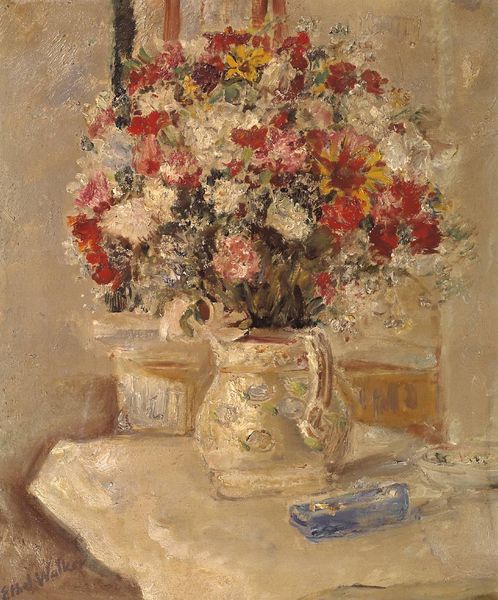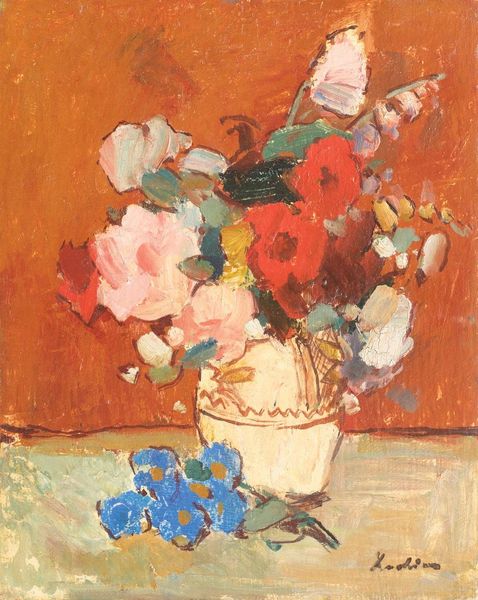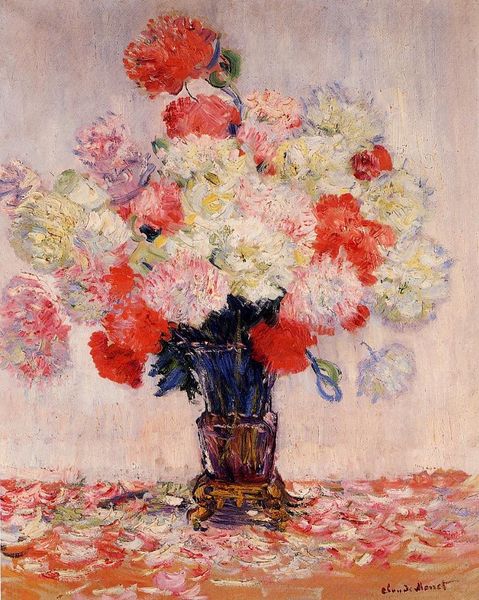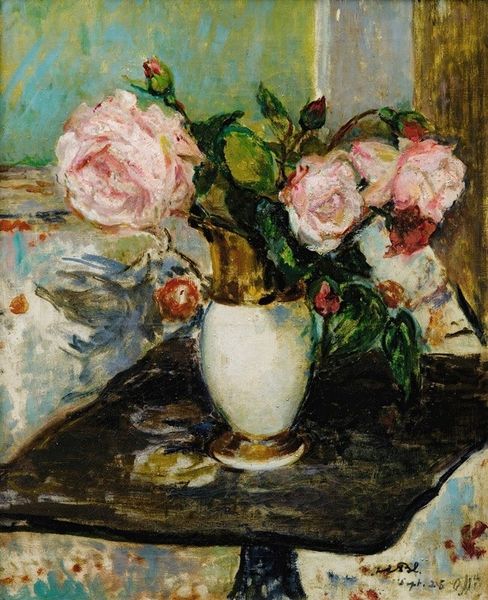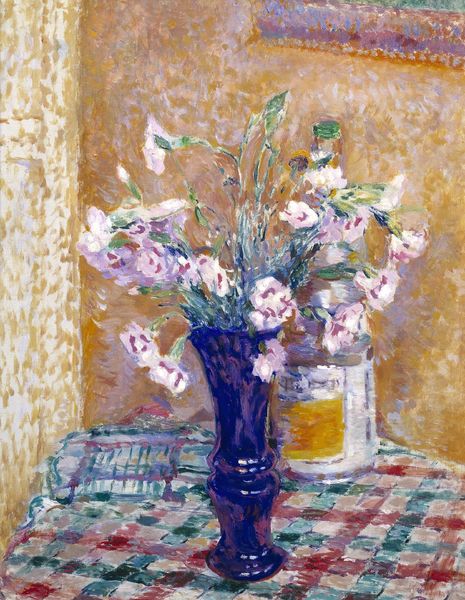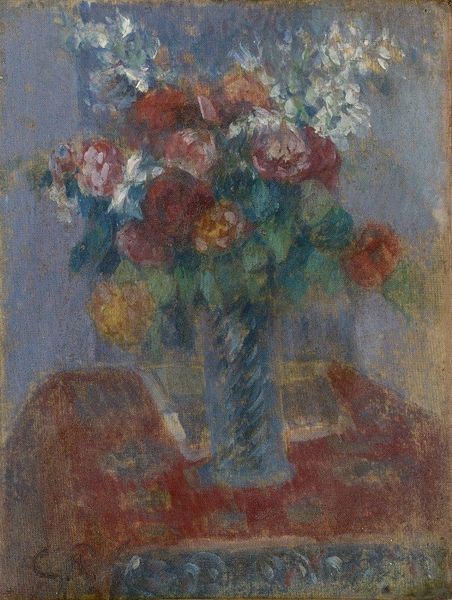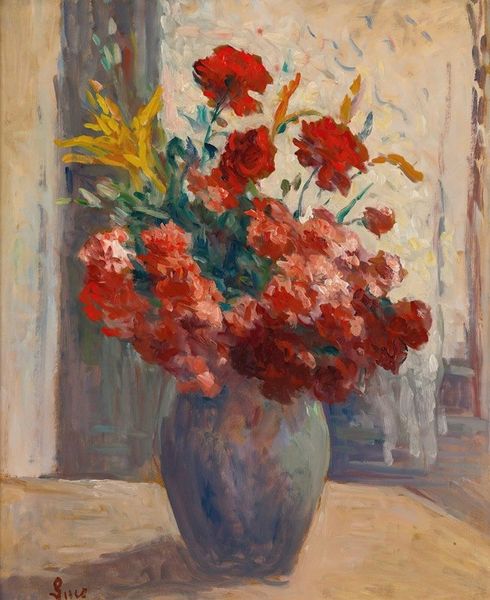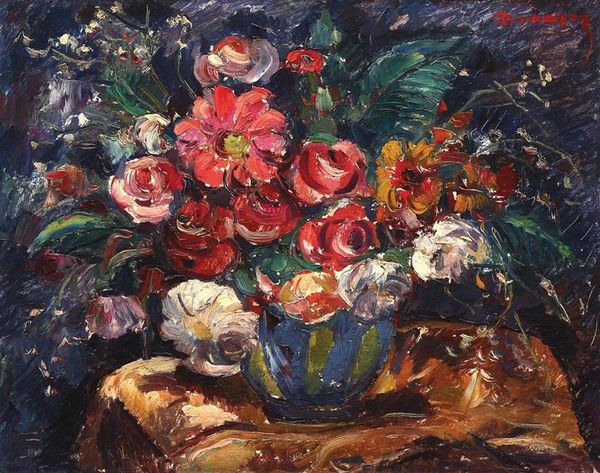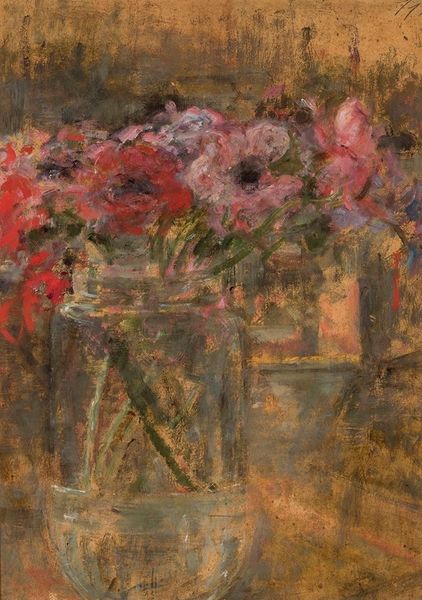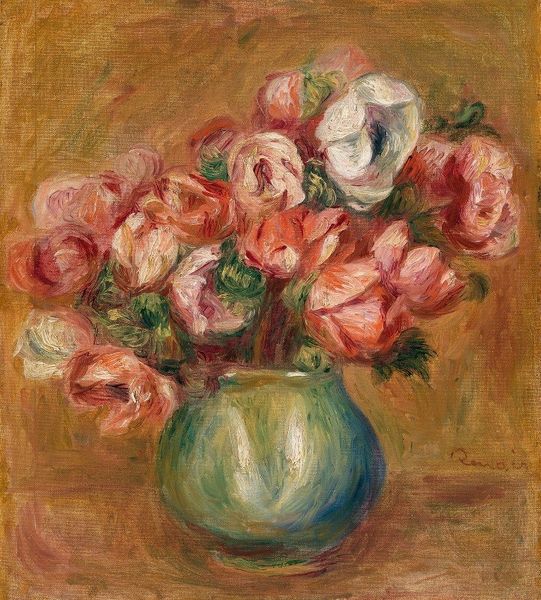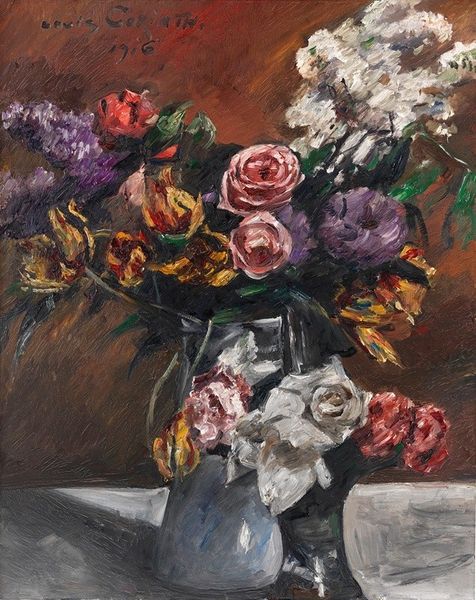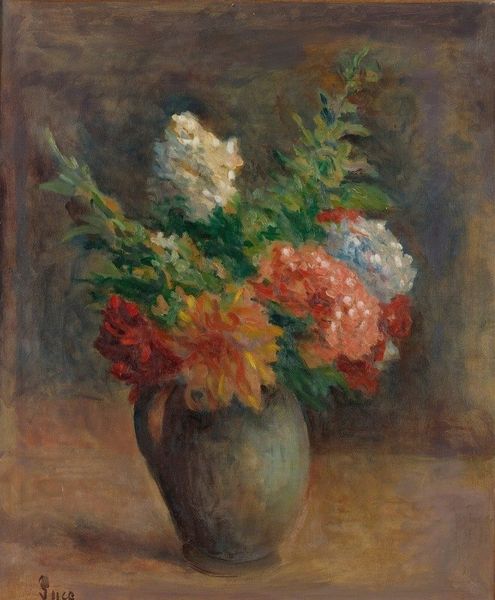
Copyright: Public Domain: Artvee
Editor: This is Édouard Vuillard’s "Flowers," painted in 1903 using oil. I’m immediately struck by the flattening of space, everything kind of blends together. How do you interpret this work? Curator: It's a quintessential example of Post-Impressionism grappling with representation versus abstraction. Vuillard was part of the Nabis group, who really pushed against the academic tradition and its focus on illusionistic depth. They wanted to emphasize the picture plane. Editor: So, you see the blurring as a conscious decision to challenge the status quo? Curator: Absolutely! Think about the cultural context – this is turn-of-the-century Paris, a society undergoing massive social and technological change. Artists like Vuillard are reflecting that shift, questioning traditional values in their art, particularly those established by official Salon culture. Notice how the domestic setting – the flowers, the table – becomes almost a stage for exploring the possibilities of color and pattern. Editor: That's fascinating! I hadn't considered the socio-political aspect of the painting's flatness. Is the wallpaper relevant? Curator: Indeed. Wallpapers played a large role in shaping fin-de-siècle aesthetics. A growing market for wallpapers and printed materials encouraged an avant-garde interest in everyday designs. Vuillard is playing with the boundaries between fine and applied arts, suggesting the way taste becomes standardized and democratized in modern life. Editor: It’s like he’s showing us the politics of domestic space. Curator: Exactly. And how even something as seemingly benign as flowers can be part of a larger cultural conversation about representation and social change. Editor: I'll definitely see paintings differently now. It's amazing how historical context adds so much meaning. Curator: Agreed. Art constantly responds to, and shapes, the world around it.
Comments
No comments
Be the first to comment and join the conversation on the ultimate creative platform.
